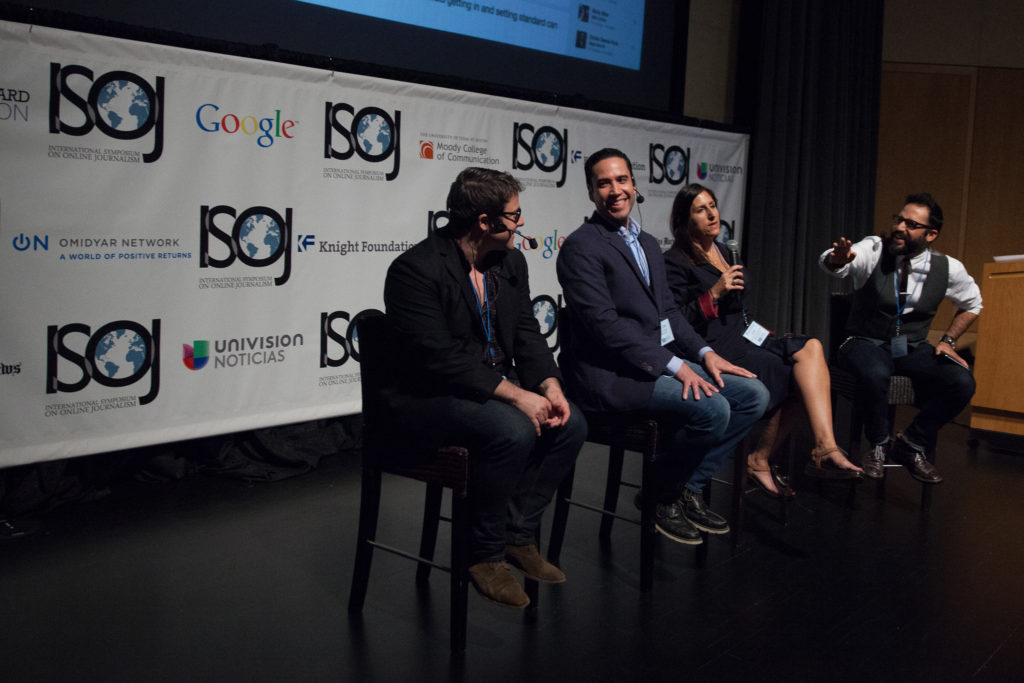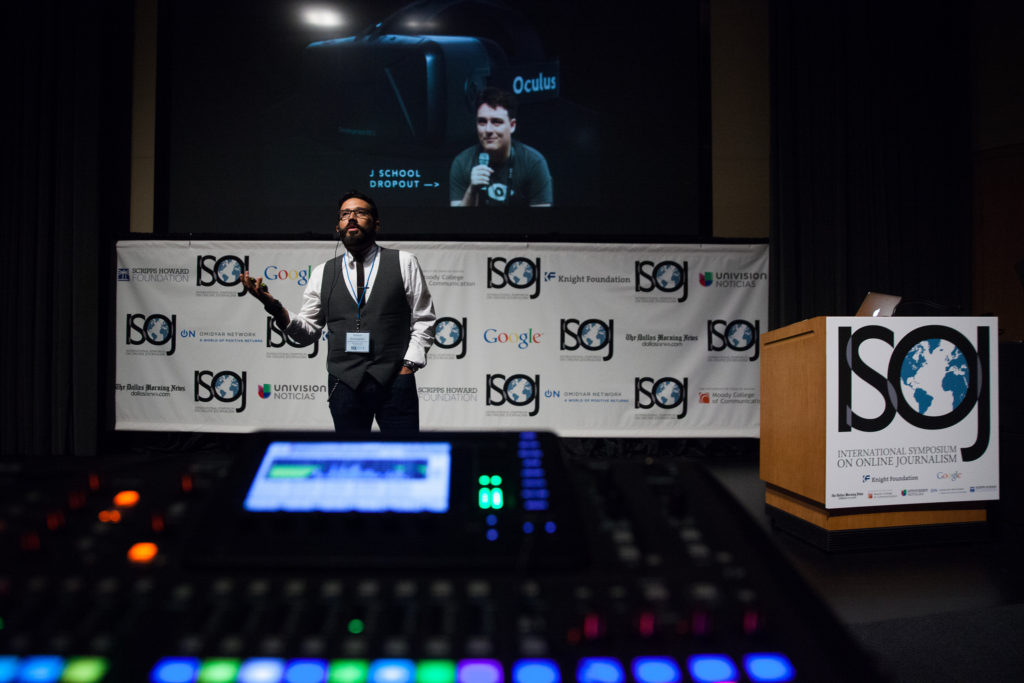April 18, 2015 | Virtual Reality
Virtual reality journalism helps audiences experience the news, ISOJ attendees hear
Through detailed descriptions, imagery and narrative ledes, reporters use words daily to draw readers into a story.
News consumers can be more immersed thanks to interactive and digital journalism, but virtual reality takes that notion a step further by seemingly physically putting people on the scene where news happens, a group heard at the International Symposium on Online Journalism (ISOJ) on Saturday at the Blanton Museum of Art, on the campus of the University of Texas at Austin.

Nonny de la Peña, founder of the immersive journalism virtual reality company Emblematic Group, spoke about how virtual reality can allow people to feel that they are physically where they perceive themselves to be.
A legacy media veteran herself, Peña said she brings those best practices into her virtual reality work.
She created a virtual reality project called Gone Gitmo in the program Second Life using real footage, photographs and witness testimony from the Guantanamo Bay detention camp that people could virtually walk through and see for themselves.
“Any good storytelling takes people there,” Peña said.
Another project, produced in only two weeks, took the audio from 911 calls made on Feb. 26, 2012, the night George Zimmerman shot and killed Trayvon Martin, an unarmed black teenager in Florida, and developed a virtual reality experience based on that audio.
Peña said when the sound engineers cleaned up the audio from the calls, Zimmerman can apparently be heard cocking his gun as he exited his car. In that way, Peña said, virtual reality creators can break news.
Taylor Owen, an assistant professor of Digital Media and Global Affairs at the University of British Columbia and the research director of the Tow Center for Digital Journalism at the Columbia School of Journalism, said virtual reality is in line with traditional journalistic principals.
“Journalism is all about representing others and bringing people closer to the actual events,” Owen said.
Widespread adoption and use of virtual reality by news operations may still be a ways off, though. Owen said the technology used to create virtual experiences is still largely unavailable, and elements of post-production are “far too cumbersome.”

The third and final speaker at the event said that while the technology to create virtual reality projects may not yet be in everyone’s pockets, the hardware to experience it “is finally here.”
Ray Soto, the 3D creative lead for virtual reality product at Gannett, told conference goers not to fear change.
“This is not a replacement for great journalism, this is only a new platform,” Soto said. It “let’s users learn at their own pace” what reporters try to portray with their stories.
The panel, called “The arrival of virtual-reality journalism: Using immersive 3D devices for experiential storytelling,” was chaired by Robert Hernandez, associate professor of professional practice at the Annenberg School for Communication and Journalism at University of Southern California.
ISOJ 2015: Virtual Reality Journalism Q&A, from Knight Center on Vimeo.

